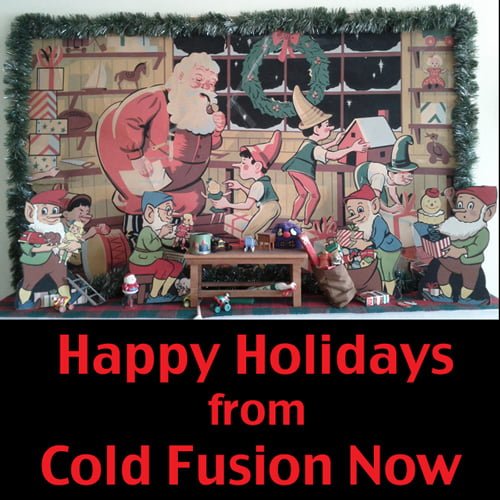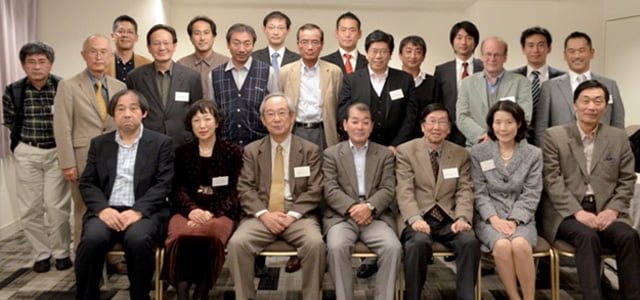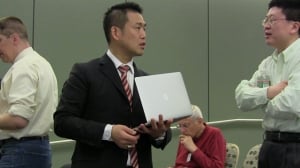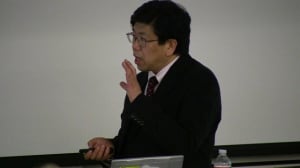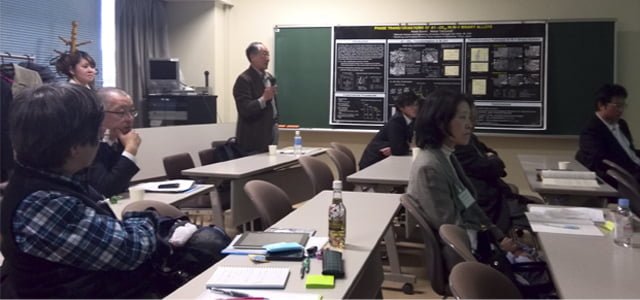The Japanese Cold Fusion Research Society (JCF) held their fourteenth meeting on December 7-8, 2013 at the Tokyo Institute of Technology in Tokyo, Japan where teams from academia and industry reported on their research.
Japanese business was an early supporter of cold fusion, also called Condensed-matter Fusion (CF), with giants like Toyota Corporation funding research that supported Drs. Martin Fleischmann and Stanley Pons in their French laboratory.
Over the twenty-five years since, official support waned for the notoriously difficult-to-reproduce reaction. The Japanese Cold Fusion Society (JCF) was formed in 1999 to bring scientists still working in the field together to share data. Since then, annual meetings have hosted live demonstrations of energy-producing cells, along with reports on multiple reproductions of key experiments.
Today, momentum is stronger than ever as industry involvement grows rapidly with corporations like Technova, Toyota, and Mitsubishi engaging in partnership with independent scientists and academics to pursue a commercial product.
Clean Planet is a new capital firm now working to advance the field with funding and resources. Founder and Chair Hideki Yoshino attended the recent meeting in Tokyo and described what triggered his involvement.
“On March 11, 2011, Japan was struck by a tsunami which devastated and created havoc throughout this island nation,” writes Yoshino. “The Fukushima meltdown triggered by the tsunami highlighted our vulnerability, even when we have the best back up systems in place. The failure of backup systems has left this country and parts of the world dealing with the threats of radioactive fallout. It became apparent that nuclear fission simply isn’t a safe and clean form of energy. This event was the catalyst for Clean Planet.”
“Clean Planet was created out of the need to better understand how we as a society can grow and prosper while protecting and providing peace and security for our future generations because we believe that a clean, safe and abundant source of energy is the key for the future of our global community.”
Yoshino and his team at Clean Planet have extensive experience in education, business, and law, and they’ve launched strong into CF. Two of the first recipients of support are Dr. Tadahiko Mizuno‘s group at Hydrogen Engineering Application & Development Company (HEAD) and Dr. Yoshiaki Arata‘s team at Arata Research Lab.
“Our direct and transparent approach allows us to 1, fund, and 2, bring human resources to the table which in turn allows us to optimize these resources to their full potential,” says Yoshino.
“Also, by bringing the community of researches and scientist together we are able to share in each others experiences which brings efficiencies both financially and academically to this exciting field of research.”
To what purpose? Yoshino is clear.
“We will initiate, create and distribute clean energy technologies that will enhance the well-being of all mankind to the global community.”
Clean Planet and HEAD will host JCF-15 scheduled for next year in Hokkaido, Japan.
Until then, Dr. X.F. Wang of the Hydrogen Eng. A&D Co. (HEAD) and the Arata R&D Center has filed this report on JCF-14.

14th Japanese Cold Fusion Research Society Meeting Report by Dr. X.F. Wang
The program: http://jcfrs.org/JCF14/jcf14-program.pdf
The abstracts: http://jcfrs.org/JCF14/jcf14-abstracts.pdf
Paper presentation: Oral presentation 20 min.
(Review: 25min) + Discussion 5 min.
Oral report language: Japanese
Please see the following abstract of JCF14 about the brief content of theoretical analysis, which is not involved in this report. (The abstracts: http://jcfrs.org/JCF14/jcf14-abstracts.pdf)
It is summarized by the speech sequence.
Day 1 Saturday, December 7, 2013
13:00-13:10 Opening Address H. Numata (Tokyo Institute of Tech.)
Experiment-1 Chairman; T. Mizuno (Hydrogen Eng. A&D Co.)
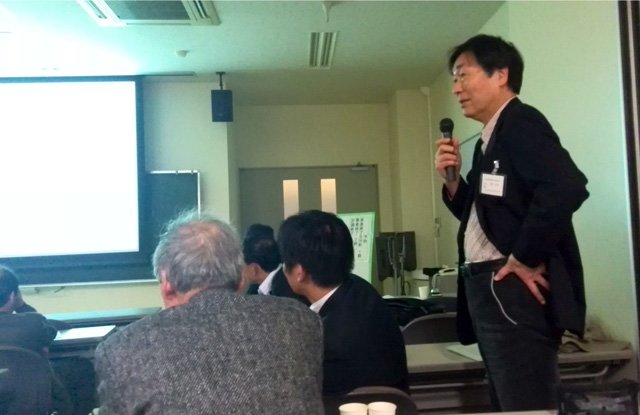
13:10-13:35 JCF14-1 A. Kitamura (Technova Inc., Kobe U.)
Title: Study on Anomalous Heat Evolution from H-Ni Nanoparticle System at Elevated Temperature with Mass-Flow Calorimetry
① A new scaled-up (ten-times-larger volume: from 50cc to 500cc) absorption system with oil(boiling point: 390 deg-C)-mass-flow calorimetry (Fig.1) is calibrated using a dummy Al2O3 powder:
Conclusions:
a. The coolant oil reached almost 300 deg.C at heater input of 231W.
b. Long-term stability, or fluctuation in terms of standard deviation, is better than 0.5deg.C.
c. Conversion factor, dW/dT=(0.970.08)W/deg with an oil-flow rate of 20 cc/min.
d. Heat recovery efficiency is (0.880.03) with heat removal time constant of (301.2) min.
②The first trial run with a 50g CNS sample (silica-included Cu・Ni nano-compound containing 4g of Ni) mixed with 200g Al2O3:
Conclusions:
a. Both TC2 at the oil outlet and RTD’s inside the reaction chamber show higher temperatures than for the blank sample, which implies a long-lasting excess power of ~20W(i.e., 5W/g-Ni).
b. The assumed excess heat appears to be on the same order as that of the CNZ(Cu・Ni/ZrO2) sample yielding 2 W/g-Ni excess power.
c. Further measurements with more precise comparison are necessary to confirm the excess.
③ The runs with a 294-g CNZ4 sample (ZrO2-supproted Cu・Ni nano-composite containing 61-g of Ni) with an axial heater added:
Conclusions:
a. TC2 at the oil outlet and RTD’s inside the reaction chamber showed higher temperatures than for the blank sample, which implies an excess power and energy of ca. 10W (i.e., 0.2W/g-Ni) and 30 eV/atom-Ni, respectively.
b. The excess power is hardly explained only by atomic/molecular processes, although no hard radiations have been observed.
c. Further investigations with a variety of run parameters is necessary to enhance the excess.
13:35-14:00 JCF14-2 S. Tsuruga (Mitsubishi H. I.)
Title: Recent Advances in Deuterium Permeation Induced Transmutation Experiments using Nano-Structured Pd/CaO/Pd Multilayer Thin Film
Concluding Remarks:
1. Low energy nuclear transmutations from Cs into Pr, Sr into Mo, Ba into Sm and Ca into Ti have been observed in the Pd complexes, which are composed of Pd and CaO thin film and Pd substrate, induced by D2 gas permeation (Fig.4).
2. An electrochemical method was applied to increase the local deuteron density near the surface of the nano-structured Pd multilayer film. Transmutation products were increased up to ~1μg/cm2 by this approach (Fig.5).
3. Statistically significant gamma-rays were detected. These emissions were supposed to be caused by the increase of transmutation products (Fig.6).
14:00-14:25 JCF14-3 T. Takahashi (Iwate U.)
Title: Deuterium permeation experiment using Pd/Ni multi-layered sample
Deuterium permeation experiment using Pd/Pd/Ni/Pd Multi-layered sample was carried out(Fig.7a).
Experiment process:
1. Sample was sealed inside the stage (shown in Fig. 7c), and then vacuumed (10-4Pa) at temperature 120℃, kept for 48~72h.
2. The temperature of sample was set up to 70℃, and then D2 gas was loaded into the chamber (Fig.7b) until 0.2MPa. D2 gas flow rate was measured by the Mass flow meter. This process was kept for 7 days.
3. After the D2 gas loading process , the chamber was exhausted at temperature 120℃ for 48~72 hours.
4. The sample was analyzed by TOF-SIMS (Time-of-Flight Secondary Ion Mass Spectrometry).
Conclusions:
1. Transmutation products from Element 133Cs were not identified (Fig.8).
2. For other transmutation products (Fig.9), it is necessary to proceed carefully assess from the impurity.
3. It is necessary to investigate about increasing the permeate flow rate, and the optimization of conditions for forming the film (Fig.10).
The flow rate is about 0.1~0.3[ccm/cm2] (Fig.10). Higher flow rate applying the sample immediately after preparation is observed. That is to say that the impurities on the surface is related to the flow rate.
Theory-1 Chairman; N. D. Cook (Kansai U.)
14:40-15:05 JCF14-4 T. Sawada (Nihon U.)
Title: Relation between the magnetic monopole and NAE of the nuclear cold fusion
15:05-15:30 JCF14-5 H. Kozima et al. (CF Res. Lab.)
Title: Atomic Nucleus and Neutron Nuclear Physics Revisited with the Viewpoint of the Cold Fusion Phenomenon
15:30-15:55 JCF14-6 H. Kozima (CF Res. Lab.)
Title: Nuclear Transmutation in Actinoid Hydrides and Deuterides
16:00-17:30 JCF Annual Meeting
18:00-20:00 Reception
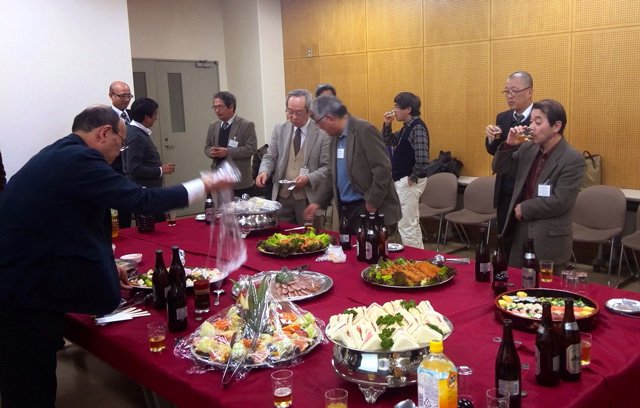
Day 2 Sunday, December 8, 2013
Experiment-2 Chairman; Y. Iwamura (Mitsubishi H. I.)
*This section was chaired by S. Narita (Iwate U.) because Y. Iwamura (Mitsubishi H. I.) called in sick.
10:00-10:25 JCF14-7 X.F. Wang (Arata R&D Center and Hydrogen Eng. A&D Co.)
Title: Synthesis of nano-Pd particles in Y-Zeolite pores by ultrasonic irradiation
0.8nm nano-Pd particles can be synthesized in Y-Zeolite pores by ultrasonic irradiation as shown in Fig.12. Since the synthesis process is not complicated, nano-Pd particles in Y-Zeolite pores can be expected to be applied to Cold Fusion. The Hydrogen/deuterium absorption features of nano-Pd particles in Y-Zeolite pores should be investigated as follows:
1. The effect of species, pores diameter of Y-Zeolite.
2. The effect of average particle size, particle size distribution of Nano Pd particles.
3. The effect of temperature, pressure.
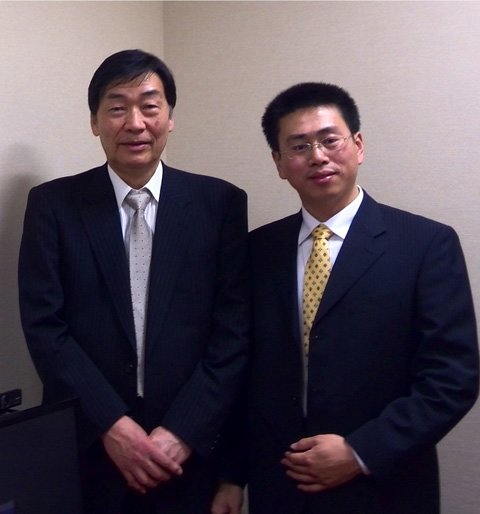
10:25-10:50 JCF14-8 H. Yamada et al. (Iwate U.)
Title: Impressive Increase in Number of Etch Pit occasionally Produced on CR-39 in Light and Heavy Water Electrolysis Using Ni Film Cathode
Conclusions:
1. The reaction does not always take place in every electrolysis experiment but occasionally does under the same experimental condition.
2. Impressive increase in number of etch pit has been observed in 4 out of 16 for H2O and 1 out of 6 for D2O electrolysis conditions.
3. The common factors to increase number of the etch pit in the CR-39 chip might be
①Ni film cathode
②The long electrolysis time
③Li in the electrolyte solution
Theory-2 Chairman; K.Tsuchiya (Tokyo National College of Tech.)
10:50-11:20 JCF14-9 A. Takahashi et al. (Technova Inc.)
Title: D(H)-Cluster Langevin Code and Some Calculated Results
*The source of BASIC EXE applied by Prof. Takahashi can be downloaded from here:
http://hp.vector.co.jp/authors/VA008683/basicw32.htm
11:20-11:45 JCF14-10 H. Miura
Title: Computer Simulation of Hydrogen States near T site in Ni and Pt Metals
11:45-12:10 JCF14-11 H. Numata (Tokyo Institute of Tech.)
Title: Numerical simulation of vortex appeared on electrode surface under long term evolution of deuterium in 0.1M LiOD
Vortex formation locally, triggered by cylindrical pillar current initiation.
12:10-13:30 Lunch
Theory-3 Chairman; E. Yamaguchi (Doshisya U.)
13:30-13:55 JCF14-12 K. Tsuchiya (Tokyo National College of Tech.)
Title: The quantum states of the system including two species of charged bosons in ion traps Ⅲ
13:55-14:25 JCF14-13 E. Igari (Hydrogen Eng. A&D Co.)
Title: Discussion about the quality of the experiments in cold fusion
Conclusions:
When we experiment in cold fusion, we must think about both theoretical and technical issues. The theory of cold fusion continues to evolve. But, the technology of experiment has not caught up with the theory. The Problems remains in the nanostructure and gas control. However, these problems will be solved by technological innovations.

14:25-14:50 JCF14-14 N. D. Cook (Kansai U.)
Title: Transmutation of Palladium and Nickel Isotopes
14:50-15:15 JCF14-15 H. Kozima (CF Res. Lab.)
Title: Nuclear Transmutations (NTs) in Cold Fusion Phenomenon (CFP) and Nuclear Physics
15:15-15:40 JCF14-16 H. Kozima (CF Res. Lab.)
Title: The Cold Fusion Phenomenon What is It?
**********************************************************************************************
Cold Fusion NOW!
Related Links
Clean Planet [in English]
Japanese Cold Fusion Research Society [in English]
Dr. Yasuhiro Iwamura at ICCF-18 “Recent Advances in Deuterium Permeation Induced Transmutation Experiments Using Nano-Structured Pd/CaO/Pd Multilayer Thin Film” [slides]
Akira Kitamura at ICCF-18 “A Mass-Flow-Calorimetry System for Scaled-up Experiments on Anomalous Heat Evolution at Elevated Temperatures” [slides]
Akito Takahashi at ICCF-18 “Nuclear Products of Cold Fusion by TSC Theory” [slides]
Decontamination of radioactive ashes by nano-silver by Toshiro Sengaku
No active nuke power in Japan in Toshiro Sengaku
 Also, please consider contributing to the fund for Bob Greenyer and family. As a member of the MFMP Open Science collective, Bob has worked strong and smart to bring cold fusion and LENR science to the public. After family tragedy, Bob needs your help to care for his family.
Also, please consider contributing to the fund for Bob Greenyer and family. As a member of the MFMP Open Science collective, Bob has worked strong and smart to bring cold fusion and LENR science to the public. After family tragedy, Bob needs your help to care for his family. 

